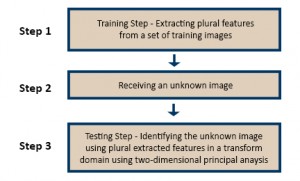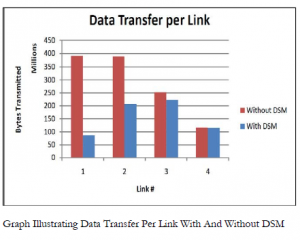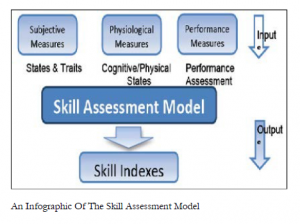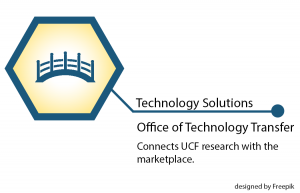Startups, Start Here: Startup-Friendly Innovations in the UCF Tech Transfer Technology Locator
January 27, 2016
Technologies available for license from the Office of Technology Transfer (OTT) are an opportunity to turn potential into profit. When taking any technology to market – whether defense or diagnostics, photovoltaics or photonics – you’ll need a few resources to make this happen such as time, capital, and know-how. In future installments of this series, we will present more on how startup companies can access these and other valuable resources, through programs at UCF.
In this week’s post, we focus on the first step in launching new businesses—identifying innovative solutions to pressing problems. The OTT Technology Locator is an online database featuring novel technologies developed at UCF. Within this database, we’ve curated a collection of special startup-friendly technologies called Startups, Start Here.
These technologies are ready for implementation and can be developed into products with fewer resources—namely, capital. Technologies highlighted for their accessibility in the Startups, Start Here collection are just as impactful as others you’ll find in the Technology Locator database and are suitable for new business formation. Read on and click the links to learn about some of our startup-friendly gems.
Facial Recognition and Identification with Significantly Reduced Storage Requirements
 Facial recognition software is increasingly becoming commonplace in our everyday lives. Mainly used by law enforcement agencies (e.g., to capture faces in crowds of people and to issue and track visas), this technology is now being implemented in banks and airports to improve crowd screening and security. One issue with currently available technologies is that they require large amounts of data storage to maintain and process captured images. UCF researchers have created an algorithm that will improve the accuracy, storage, and computational properties of facial image classification/recognition. This unique algorithm leads to an approximate 90 percent reduction in storage space required without sacrificing the level of recognition accuracy. The technology could be used not only for facial recognition, but also signature verification and other types of pattern recognition.
Facial recognition software is increasingly becoming commonplace in our everyday lives. Mainly used by law enforcement agencies (e.g., to capture faces in crowds of people and to issue and track visas), this technology is now being implemented in banks and airports to improve crowd screening and security. One issue with currently available technologies is that they require large amounts of data storage to maintain and process captured images. UCF researchers have created an algorithm that will improve the accuracy, storage, and computational properties of facial image classification/recognition. This unique algorithm leads to an approximate 90 percent reduction in storage space required without sacrificing the level of recognition accuracy. The technology could be used not only for facial recognition, but also signature verification and other types of pattern recognition.
Computer Recognition of Human Movements from Any Angle
The field of human activity recognition has blossomed over the last few years, thanks to new and potential applications in video surveillance, physical therapy, and sports. The main challenges, however, include perception distortions, differences in viewpoint, and unknown camera parameters. UCF researchers have developed a method to identify human poses from video sequences, regardless of variables such as camera angles and specifications. This method charts a pose as a triplet of points, which surpasses conventional methods that study the human body as a whole. This technology can be applied to any user interface based on gestures including smartphones, robotics, or gaming.
Significantly Reduce Internet Traffic from Video Streaming
 Before the advent of video and audio streaming, users mainly logged onto the Internet for composing emails and browsing the Web, and thus the Internet Superhighway allowed data to flow openly and freely. Now, with services such as YouTube, Netflix, and Spotify, more than 70 percent of peak Internet traffic in North America comes as a result of on-demand streaming. In fact, it has been projected that by 2019, 80 percent of Internet traffic will be from streaming, leaving little room for other activities.
Before the advent of video and audio streaming, users mainly logged onto the Internet for composing emails and browsing the Web, and thus the Internet Superhighway allowed data to flow openly and freely. Now, with services such as YouTube, Netflix, and Spotify, more than 70 percent of peak Internet traffic in North America comes as a result of on-demand streaming. In fact, it has been projected that by 2019, 80 percent of Internet traffic will be from streaming, leaving little room for other activities.
This projected increase in data usage has caused content providers and Internet service providers to search for new solutions to handle traffic that can significantly slow Internet speeds, especially during unforeseen special events (e.g., an unexpected death of a famous musician can cause huge usage spikes for online music and video content providers).
A novel method called Dynamic Stream Merging (DSM) enables the transmission of large amounts of data on the Internet while accommodating Internet on-demand surges. This robust network data-access environment provides desired traffic management, even during times of unexpected high demand. As a result, customers experience significantly reduced Internet traffic, higher efficiency within Internet networks, and lower costs.
Advanced Skills Screening to Identify Valuable Personnel
 When it comes to hiring the best candidate for your organization, an effective skills screening process can offer some much needed insight. Currently available methods use either subjective or performance measures, which have been proven unreliable, time-consuming, expensive, and uninformative as to real-time abilities and projections of future performance. The Skill Assessment Model utilizes three types of qualitative testing measures to ensure reliable individual evaluations: subjective, physiological, and performance. Combined, these measures provide an index of applicable skills for the candidate. Not only is this method faster and cheaper than other advanced skill assessments, it is also transferrable across individuals and tasks (i.e., no need to re-create the model for a different task or a different group of individuals performing the same task).
When it comes to hiring the best candidate for your organization, an effective skills screening process can offer some much needed insight. Currently available methods use either subjective or performance measures, which have been proven unreliable, time-consuming, expensive, and uninformative as to real-time abilities and projections of future performance. The Skill Assessment Model utilizes three types of qualitative testing measures to ensure reliable individual evaluations: subjective, physiological, and performance. Combined, these measures provide an index of applicable skills for the candidate. Not only is this method faster and cheaper than other advanced skill assessments, it is also transferrable across individuals and tasks (i.e., no need to re-create the model for a different task or a different group of individuals performing the same task).
—
These examples highlight a few of the many technologies available for licensing in a wide variety of fields. If you’re ready to disrupt an industry with UCF technology, contact us to start the conversation.
Written by Deborah Beckwin.

